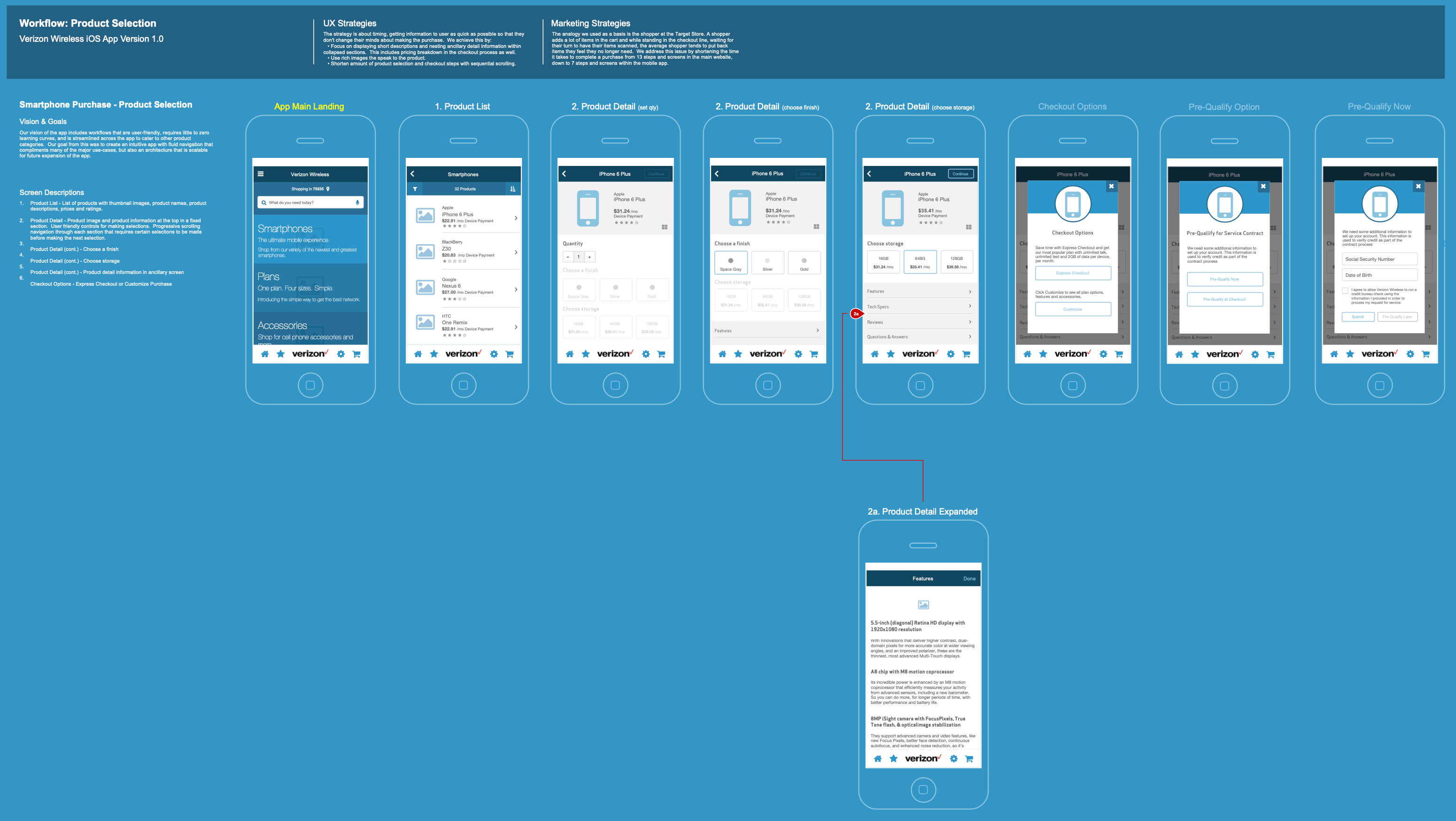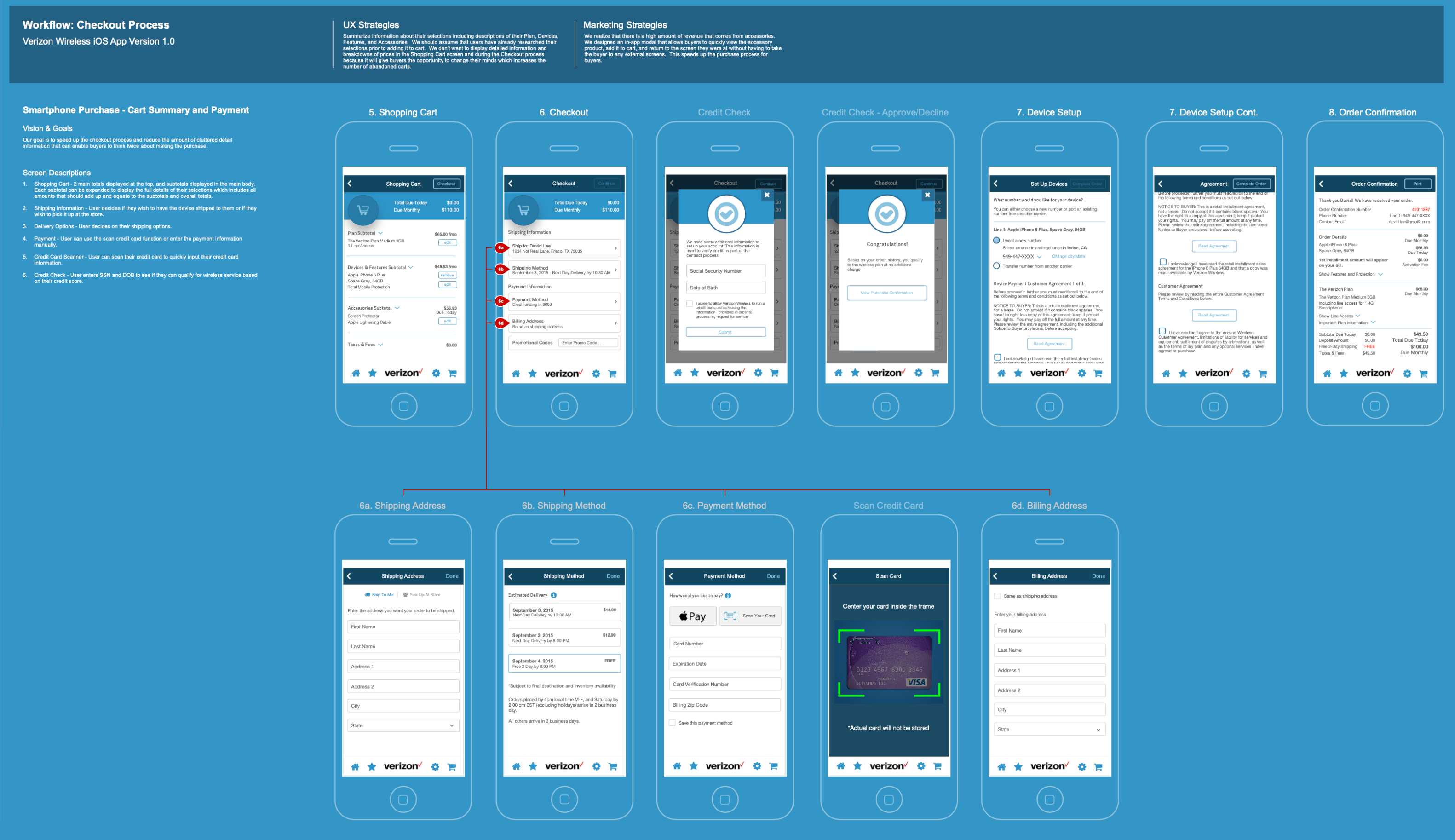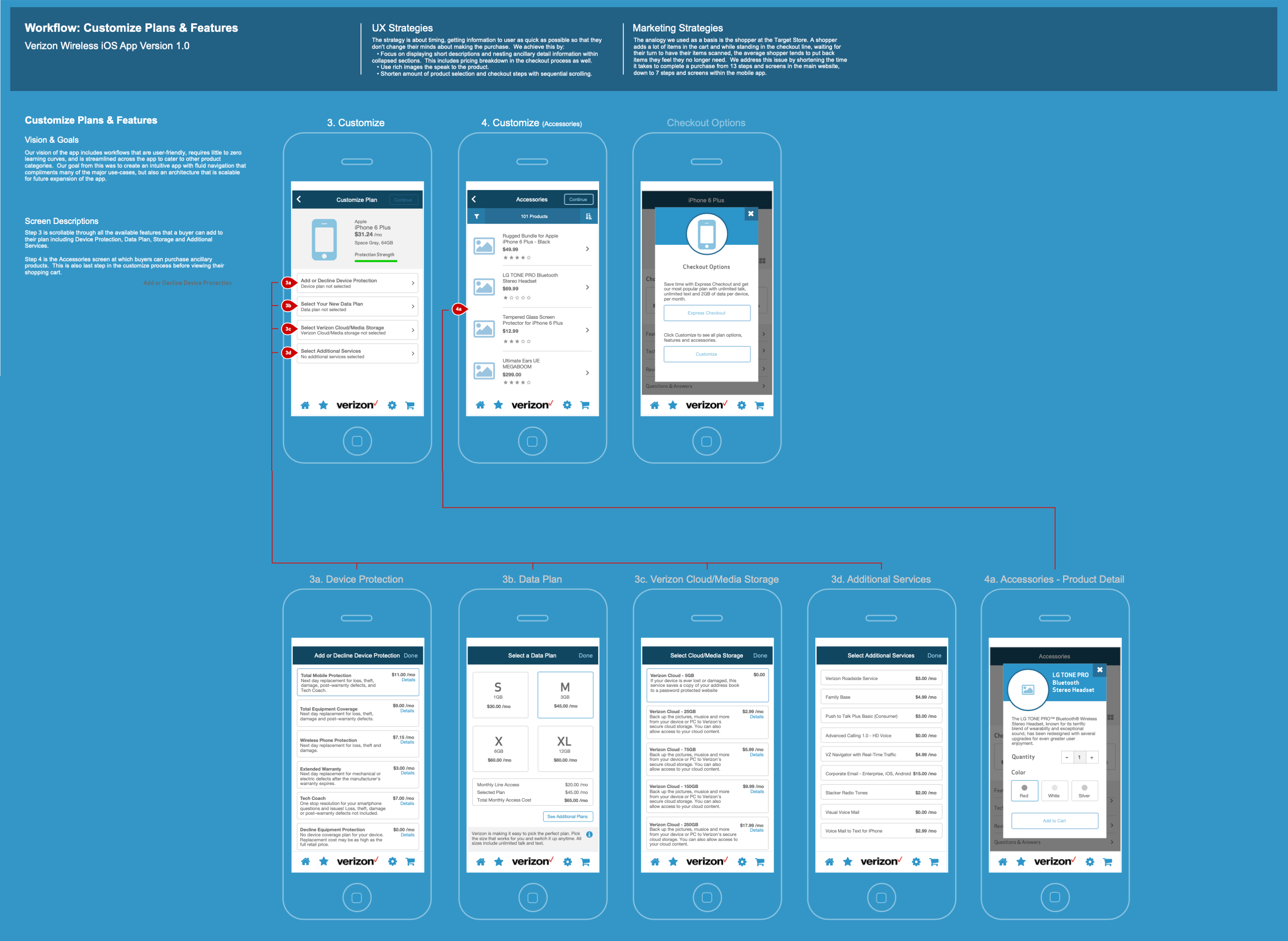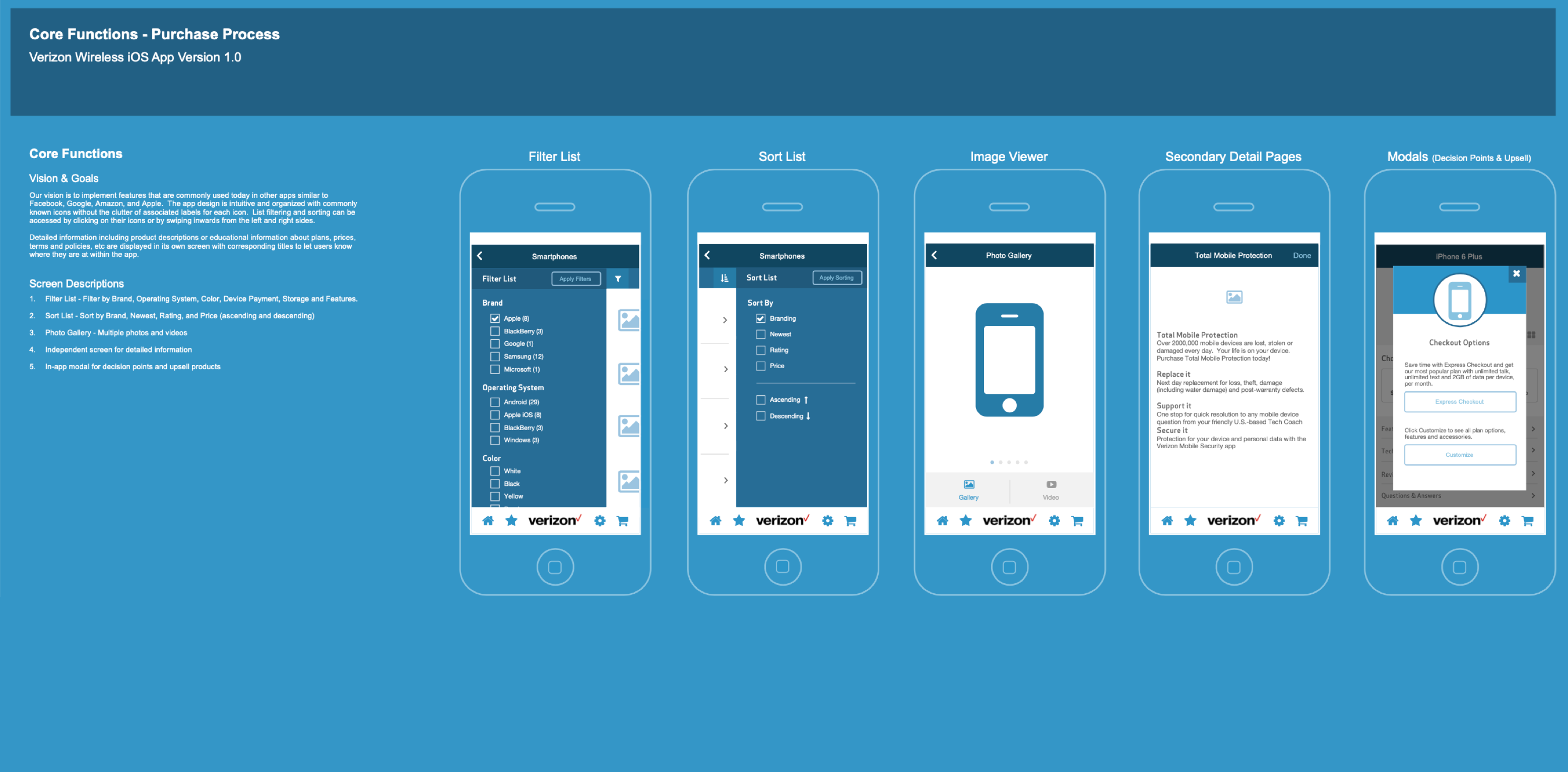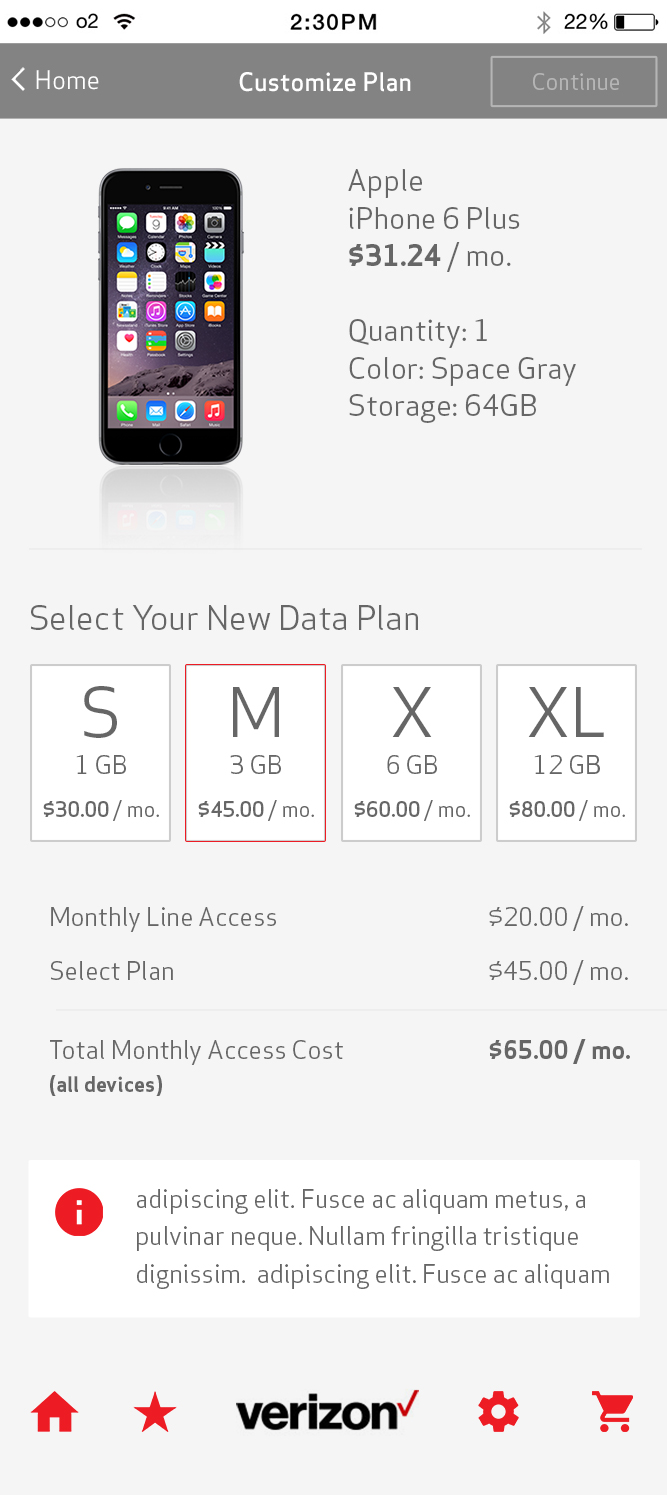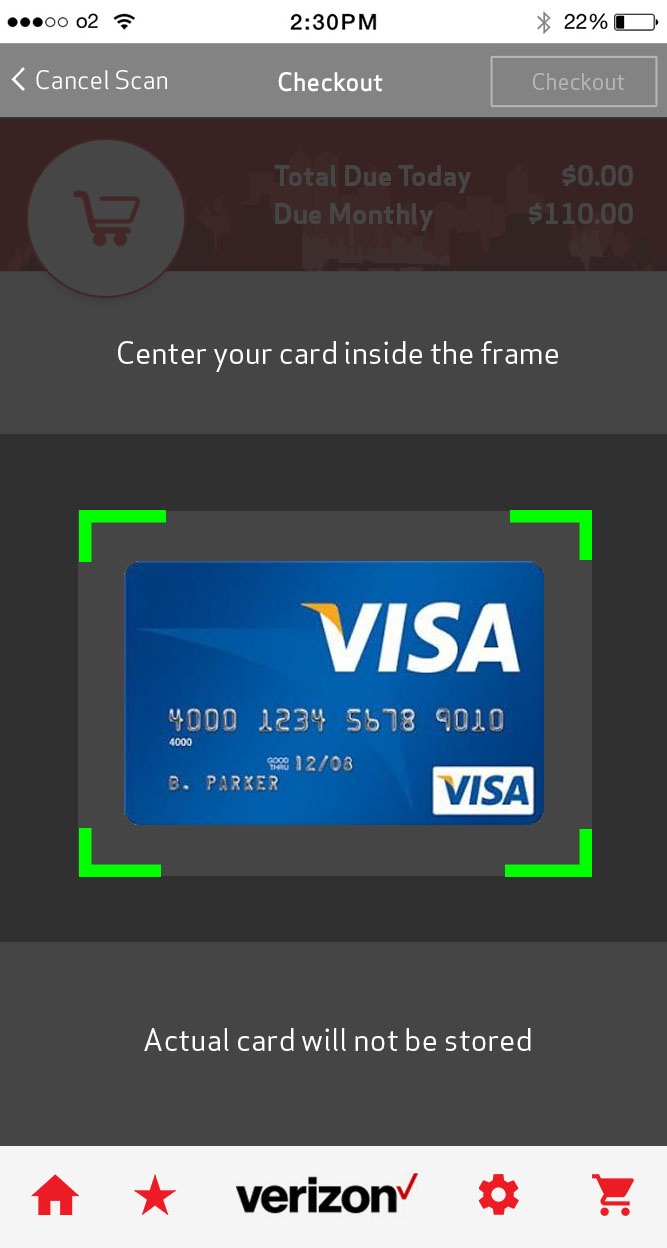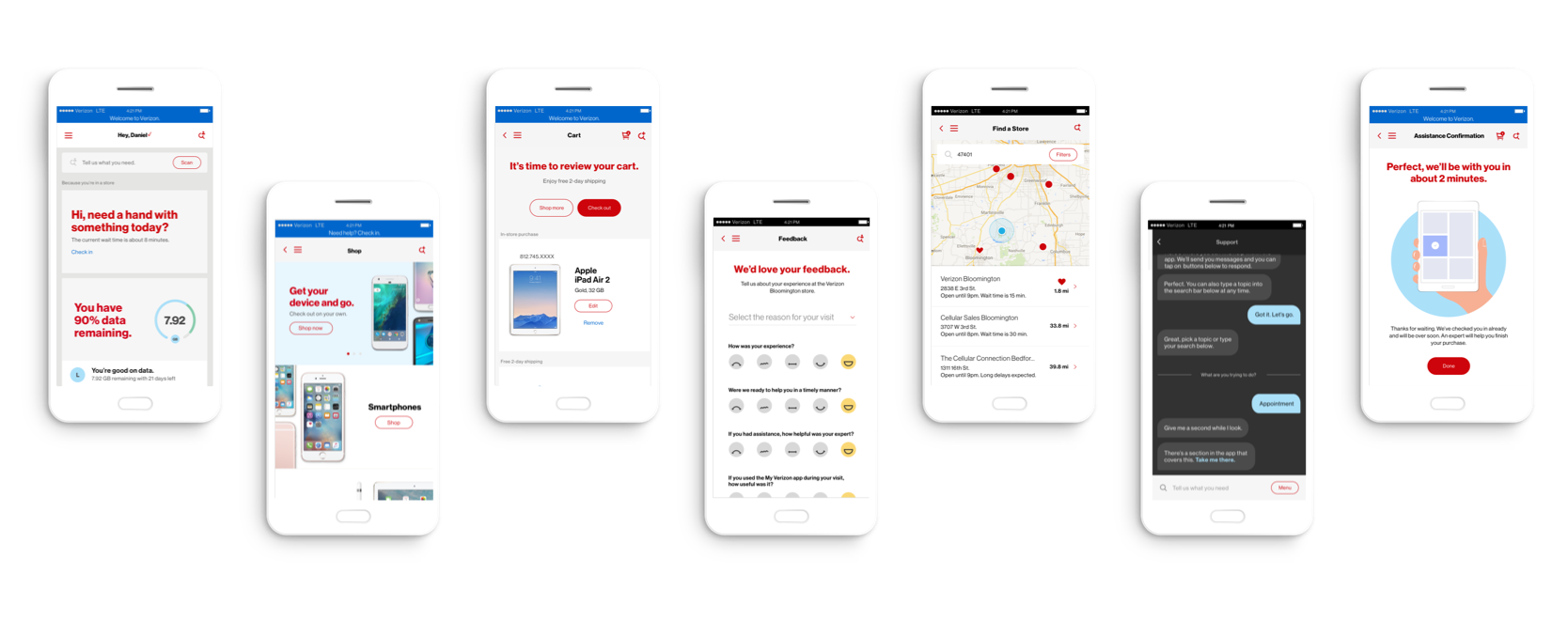Verizon
Overview
I was handpicked by the VP of Product to lead the architecture and UX design of a brand-new Verizon Wireless mobile app for both iOS and Android. This fast-paced, high-impact initiative was aligned with Verizon's national rebranding campaign and required a strategic blend of UX innovation, technical feasibility, and business alignment—all under an aggressive timeline.
Objectives
- Architect and prototype a new mobile app for rebrand launch.
- Rethink user flows that have friction points and unnecessary points of exit.
- Create a foundation that is modular to support business models and revenue streams.
- Introduce modern app features that improves UX and drives conversions.
Timeline
6 WeeksCategory
Telecommunications, Mobile App RedesignContribution
UX Design, Frontend Development(Rapid Prototyping)
The Challenge
My role spanned the full UX architecture lifecycle—from foundational research and competitive analysis to wireframes, prototyping, and high-fidelity design. I had only 9 weeks to deliver a prototype to a panel of executives. The success of this project would decide if a new Verizon Wireless mobile app would launch along with the Verizon rebranding.
Mobile App Architecture
A key highlight was redesigning the core purchase flow to streamline plan selection and enrollment, significantly improving usability and increasing conversion potential.
UX Innovation
To manage app complexity at scale, I developed a layered UX framework with a clearly defined view hierarchy: primary flows anchored on the main screen, contextual interactions handled via slide-out panels, and critical decision points presented through modals. This approach enhanced task efficiency and reduced cognitive load. Close collaboration with engineering ensured all design solutions were feasible, scalable, and ready to transition smoothly into full production.
The Results
Within 6 weeks, I delivered a validated proof-of-concept that secured internal buy-in and accelerated momentum. By championing design excellence at the enterprise level, I blended UX best practices with performance-focused interaction design to shape a flagship product that now supports millions of users. The success of this initiative reinforced my reputation as a trusted strategic leader—someone who could deliver high-visibility, high-impact work under pressure while aligning teams around a shared, customer-centric vision.
While KPIs weren't shared, the core architecture I designed is still in use today. The modular, flexible foundation has supported ongoing feature integrations and design updates since launch.

